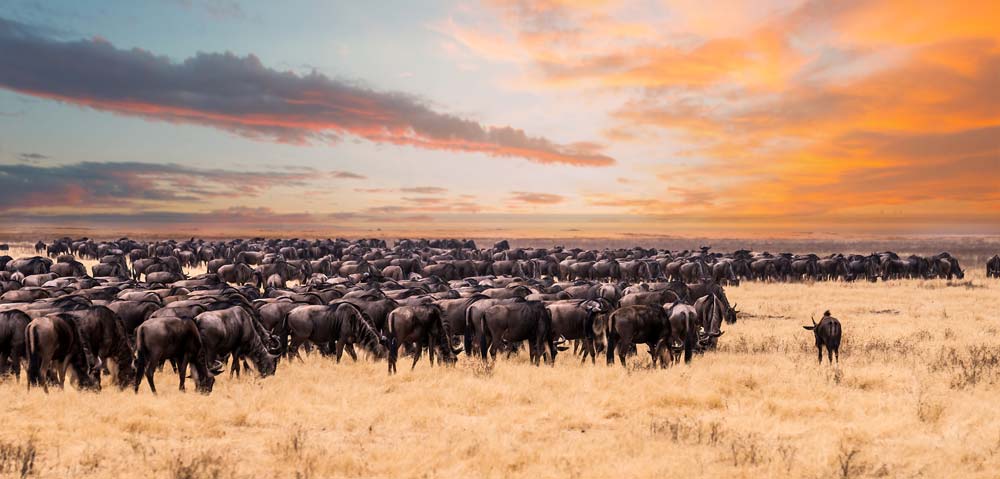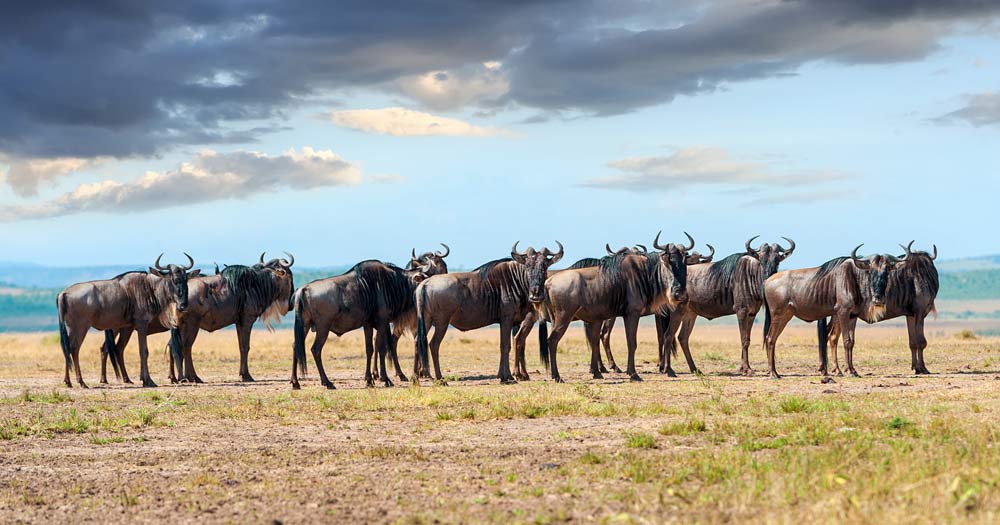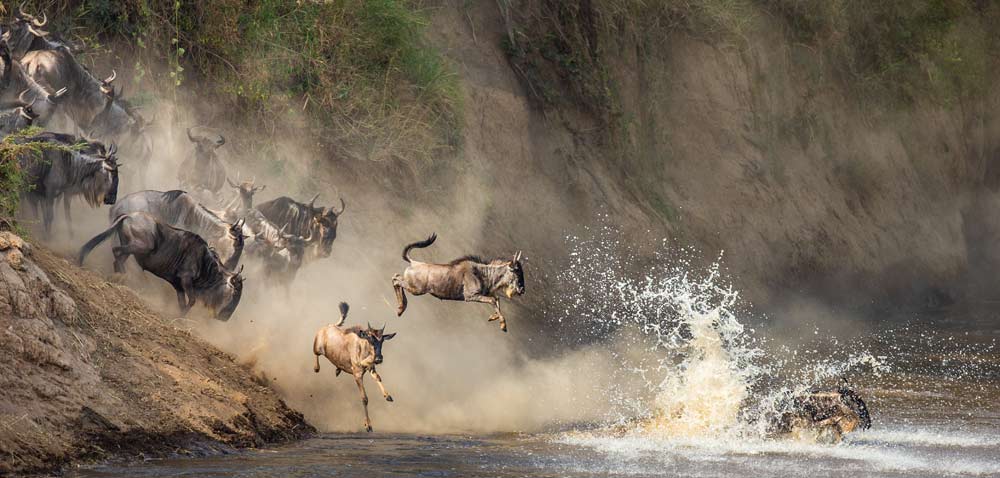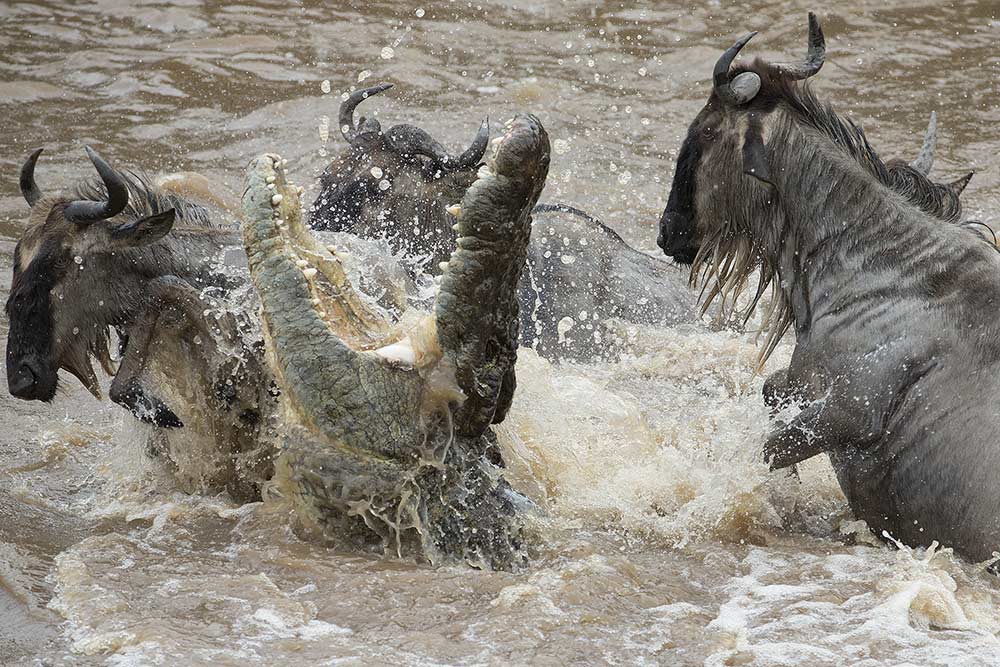The migration of the wildebeest in Kenya’s Masai Mara National Reserve is the largest single movement of wildlife on the planet. It’s also known as the Greatest Wildlife Show on Earth – with good reason.

The annual migration of the wildebeest in the Masai Mara is a spectacle unrivalled in grandeur. Pure theatre, it is always awe-inspiring, sometimes comic, often tragic. Painted large across the face of the savanna it presents an image that is both breathtakingly beautiful and bitterly brutal.
The Blue wildebeest is also known as the gnu
The blue wildebeest is a large antelope that gets its name from the silvery blue sheen of its hide. Looking rather as if a can of paint has been emptied over it, it has shaggy festoons of black hair that tumbles from its head and along its back.

Between the end of July and November, over one-and-a-half million blue wildebeest (Connochaetes taurinus), accompanied by half again as many zebras and gazelles, migrate from the short-grass plains of Tanzania’s Serengeti National Park to fresh pasture in the grasslands of Kenya’s Masai Mara National Reserve.
Towards the end of October, the wildebeest begin crossing back into Tanzania. The actual timing of the migration, however, is dictated by the weather and does not always run to schedule.
A new-born wildebeest learns to walk in minutes
Some 500,000 wildebeest calves are born in February and March of every year. Weighing up to 22kg at birth, they learn to walk within minutes. At maturity, a wildebeest can run at up to 80 kilometres per hour.
The famous Mara River crossing
Moving in groups of up to 20,000 at a time they thunder across the plateau hesitating only briefly to cross the Mara River. And here many fall prey to the waiting crocodiles which drown their prey by clutching them in their strong jaws and pulling them below the water, twisting them to break off bite-size pieces. A crocodile can lunge more than half of its body length out of the water to grab a potential victim and can also use its tail as a secondary weapon.


Swarm intelligence
While the migration may seem like a chaotic frenzy of movement, research has shown that a herd of wildebeest possess what is known as ‘swarm intelligence’. This means that the wildebeest systematically explore and overcome an obstacle as one entity. However, because wildebeest have no natural leader, the migrating herd often splits up into smaller herds. These also circle the main, mega-herd, going in different directions.

Wildebeest sightings in the Masai Mara are guaranteed
As well as featuring in the main migration, Kenya has its own private migration. This is known as the Loita migration, which commences in April. At this time, some 30,000 wildebeest migrate from the conservancies to the north of the Masai Mara National Reserve to the mineral-rich soils of the Loita Plains. And they linger there until June when they move back to the private conservancies.
© 2025 Kenya Holidays
